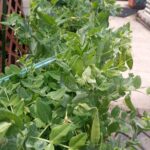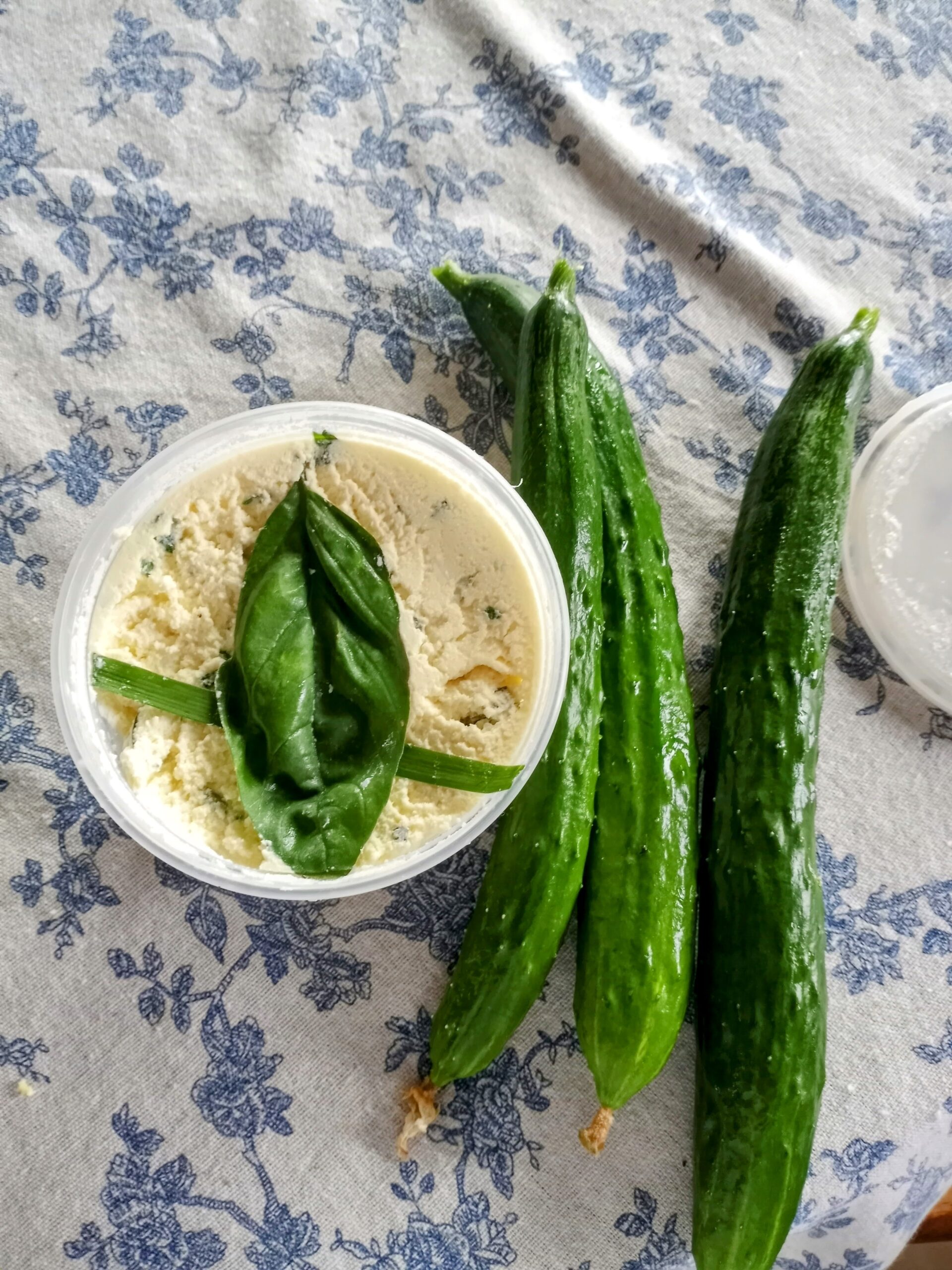The short answer: yes. Yes, you can eat bolted lettuce, but the taste and texture might not be as tasty as before it bolted. In this article, I answer your questions about bolted lettuce, how to prevent it, and how to eat bolted lettuce leaves.
What is Bolted Lettuce?
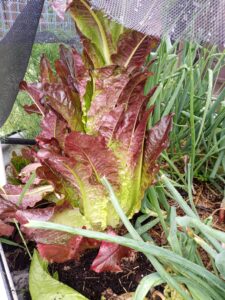

Bolted lettuce is a lettuce plant that has transitioned from its leafy growth phase to its reproductive phase. This process is known as bolting. During bolting, the lettuce plant will form a flowering stalk first. Then, the leaves often become tougher and develop a more bitter taste. There is also more of the bitter sap in lettuce, which some say is desirable because this is the same substance that is present most in medicinal wild lettuce – cultivated for it’s pain relieving properties.
Most people consider it to be inedible at this point. Nay, nay, I say. Read on for more.
What Causes a Lettuce Plant to Bolt?
Lettuces typically bolt when the daylight hours increase – during late spring and summer. Heat will also cause bolting. Lettuce is considered a cool-season crop, so high temperatures can stress the plant and cause it to bolt.
The age of the plant also is a factor in bolting. Older plants are more likely to bolt. And by “older” it really depends on the variety and the season. Some varieties are better suited for shorter growth cycles as experienced in warmer months. The variety “Giant Ceasar” is a lettuce we like to grow in the summer months. More on that later.
Succession Plant Lettuce to Prevent Bolting
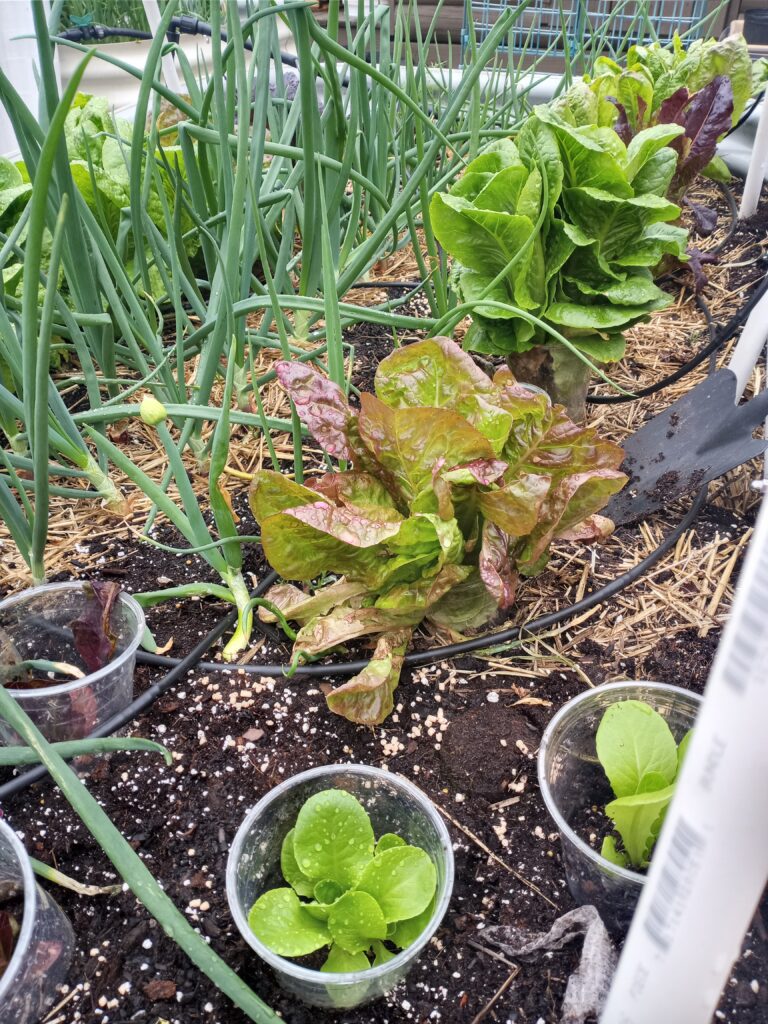
To get a continual supply of lettuce no matter what season you are in, you must succession plant.
Succession planting of lettuce is a gardening technique used to ensure a continuous harvest of fresh lettuce over a prolonged period. Instead of planting all your lettuce at once, you stagger the planting times so that new crops are maturing while others are being harvested. This method helps avoid a glut of lettuce all at once and ensures a steady supply throughout the growing season.
Here’s how you can implement succession planting:
- Stagger your planting of lettuces. Plant small batches of lettuce seeds every 1-3 weeks. This way, as one batch reaches maturity and is harvested, another batch is coming up right behind it.
- Plant different varieties: Use different lettuce varieties with varying maturity rates. For example, you can plant some quick-maturing leaf lettuce alongside slower-maturing romaine or butterhead types. I plant only red leaf and romaine types during warmer months in my zone 7b kitchen garden.
By using succession planting, you can have fresh lettuce for a much longer period than if you planted all your lettuce at once. We eat lettuce from our salad garden all year long using this method, combined with some of the secrets I have learned over the last twenty years of kitchen gardening in multiple challenging climates (try growing lettuce in hot humid Hawaii!).
This is why I like to grow and harvest heads of lettuce, rather than using the cut-and-come-again method. It makes life simpler: harvest a head, and plant an new one in it’s place for continual supply of lettuce in your kitchen garden. If you would like more information on how I do this in my own kitchen garden, stay tuned for my free guide on how I plant and harvest lettuce heads for a continual salad garden.
How to Eat Bolted Lettuce
Bolted lettuce is bitter. I used to think we could not eat it at all after it bolted. It was just, yuck. Suggestions you might find on the interwebs are:
- Cooking the bolted lettuce
- Mixing with other green
- Using strong-flavored dressings
- Chopping the leaves finely
- Blending the leaves into a smoothie
- Making pesto or chimichurri
- Juicing the bolted leaves
Here’s the Real Secret to Eating Bolted Lettuce
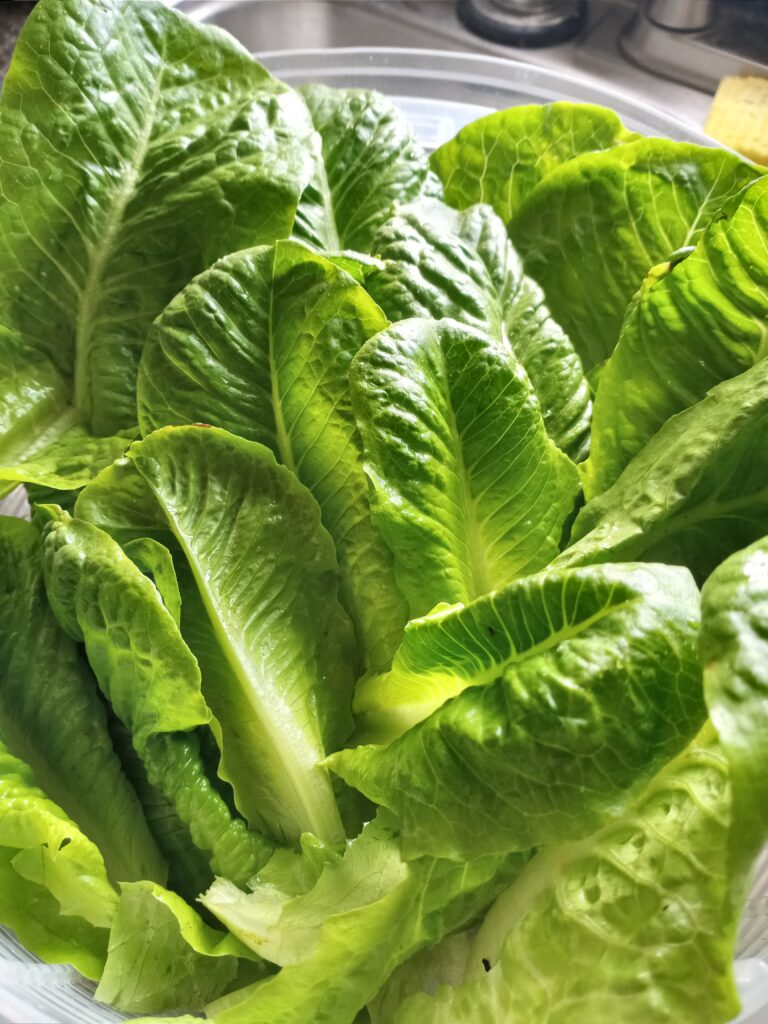
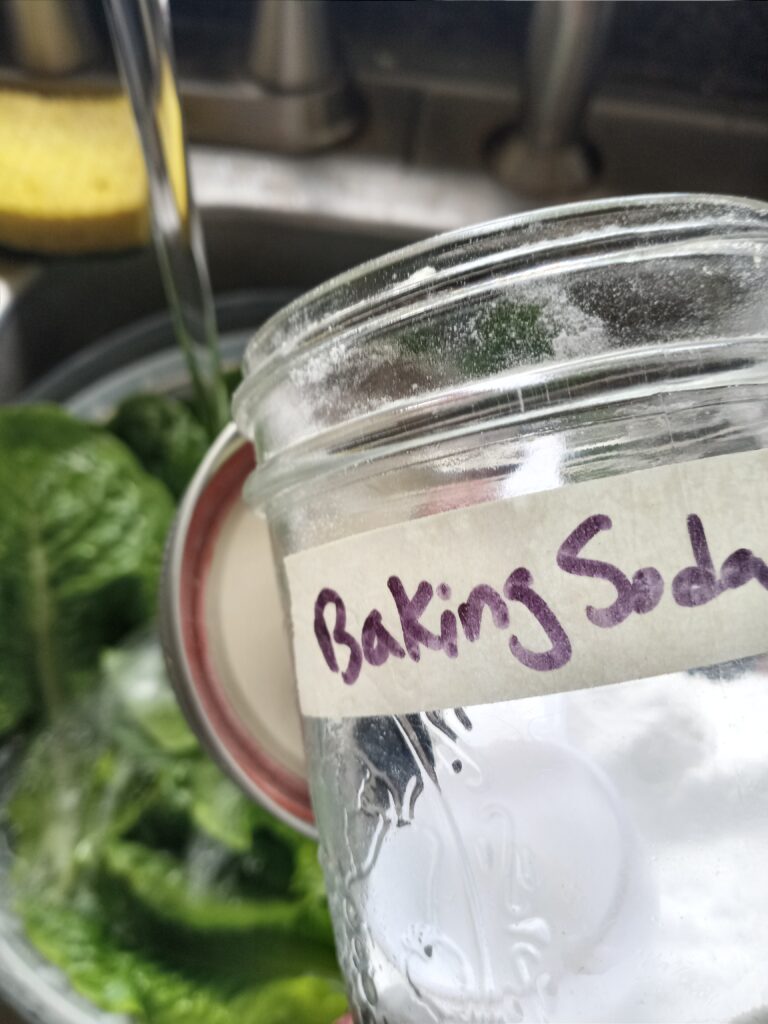
The real secret: baking soda. Yup. Just plain baking soda will take the bitterness out of the bolted lettuce leaves so you can enjoy it as a regular, healthy salad. We do this all the time and it works like a charm.
Here’s how to eat bolted lettuce leaves:
- Harvest your head of lettuce and pluck off the leaves you want to eat.
- Then put it in your salad spinner with a tablespoon of baking soda.
- Let it sit for 15 minutes in the baking soda and water.
- Rinse the lettuce leaves well by dumping out all the water, and filling up the bowl of your spinner again.
- A third rinse will ensure perfection.
- Make sure you spin your lettuce leaves several times so they are completely dry. This salad spinner is what I have used for many years and I recommend it.
And this is how you eat bolted lettuce leaves so they are not bitter – not cooked, not messed with. Just a beautiful salad from your own kitchen garden – even in warmer months!


